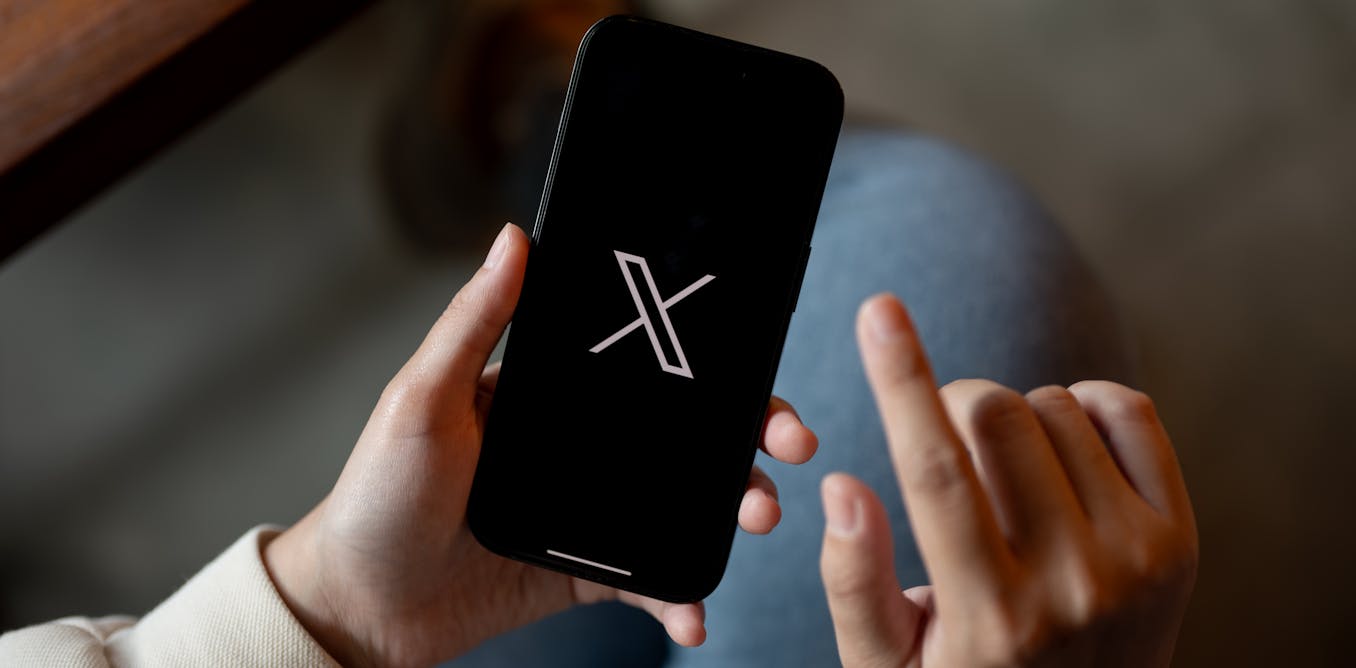It’s now almost two years since Elon Musk concluded his takeover of Twitter (now called X) on 27 October 2022. Since then, the platform has become an increasingly polarised and divisive space.
Musk promised to deal with some of the issues which had already frustrated users, particularly bots, abuse and misinformation. In 2023, he said there was less misinformation on the platform because of his efforts to tackle the bots. But others disagree, claiming that misinformation is still rife there.
A potential reaction to this may be apparent in recent data highlighted by the Financial Times, which showed the number of UK users of the platform had fallen by one-third, while US users had dropped by one-fifth. The the data used to reach these conclusions may be open to question, as it is hard to find out user numbers directly from X.
The figures also come out against the background of a disagreement over whether X’s traffic is waning or not. But there has been a notable trend in academia for individuals and some organisations to leave for alternative platforms such as Bluesky and Threads, or to quit social media altogether.
Elon Musk has claimed that X is hitting record highs in user-seconds, a measure of how long users are spending on the site. But advertising revenue is reported to have dropped sharply amid Musk’s controversial changes, such as his “free speech” approach on the platform. If so, it will be reflected in the platform’s financial performance which has been dire. The platform currently has no clear pathway to profitability.
X’s loss has naturally been a gain for its competitors. Despite a rather slow start due to its “invite only” model, Bluesky recently announced that it had topped 10 million users. This is still quite small compared to X’s 550 million users and Threads’ 200 million users.
But there are questions with all platforms over how active users are and the proportion of bots versus human users. Threads also benefits by being connected to Instagram.
The world’s richest man can afford to let X devalue from his purchase price of US$44 billion (£33.7 billion). Likewise, Meta can probably afford to prop up Threads. But Bluesky will have to find inventive ways to remain viable as a platform. So is it the right time for users to try something completely different on social media?
Alternatives to X have to be mindful of striking the right balance between being a viable social media platform and not developing the same issues that have turned X toxic for many users.
Frederic Legrand – Comeo / Shutterstock
The approach taken by Bluesky and Mastodon is to engage with their community more to deal with issues such as abuse and fake information. Moderating content is tricky, as it requires a lot of resources and support for those using the platform.
But the contrast with Elon Musk’s approach to ownership is stark.
The problem for Bluesky, and to a lesser extent Mastodon, is that once a platform gains traction it also attracts those with bad intent. Think of it as the one nice, cool bar in town that suddenly becomes popular. Once everyone hears about the bar, the troublemakers start to arrive.
When that happens, the good people have to find a bar elsewhere. Once an alternative platform becomes a means to reach many millions, the people that drove users away from X may head there like moths to a light.
Alternative approaches
One possible solution is a subscription model for social media alongside paid advertisements. For growing platforms, such as Bluesky, sponsored posts and adverts will come as the user base grows in numbers.
But as was evident with X, that is unlikely to be enough. X’s annual revenue peaked at US$5 billion (£3.8 billion) in 2021 and has been in decline ever since. This also takes into account how the platform has culled thousands of jobs in the past two years.
The subscription model is not new to social media. X has its own paid-for blue checkmark and LinkedIn has a premium subscription. This alone still does not guarantee a profitable or functioning social media platform.
Having a subscription-based social media platform is not exactly equitable either, as not everyone can afford to pay. The question is how much people would be willing to pay for a social media subscription that guarantees no adverts and bots, as well as proper moderation to remove abusive and fake information accounts.
The trade off is that free users would have to deal with the inconvenience of adverts on their timelines. There could be other models floated where non-profit and student accounts are cheaper, but this again excludes other users. It also may not sit well with shareholders focused on profitability.
As it stands, if all 10 million Bluesky users paid £5 a month to the platform, it would generate £60 million a year. That is not even close to X’s revenue of US$300 million (£230 million) back in 2012.
Real change
People moving to a new social media platform will want assurances that it won’t turn into another X. Organisations and individuals with large followings may also be reluctant to invest time in new platforms when they still get something out of the old. There are big, mainstream alternatives of course: Instagram, Facebook and TikTok, but Twitter offered something different.
Real change could happen when the organisations leaving X due to how it has been run reaches a critical mass, though what that threshold represents is open to question. Those in the world of academia are cautious and at best hedging their bets, as I have found with my own search.
Just as X increasingly fails to deal with misinformation, it is leaning further into the same headwind as right-wing platforms such as Truth Social. The newer platforms might find themselves a safer haven for now, but that is likely to change if lessons around ownership, funding and moderation are not learned.




